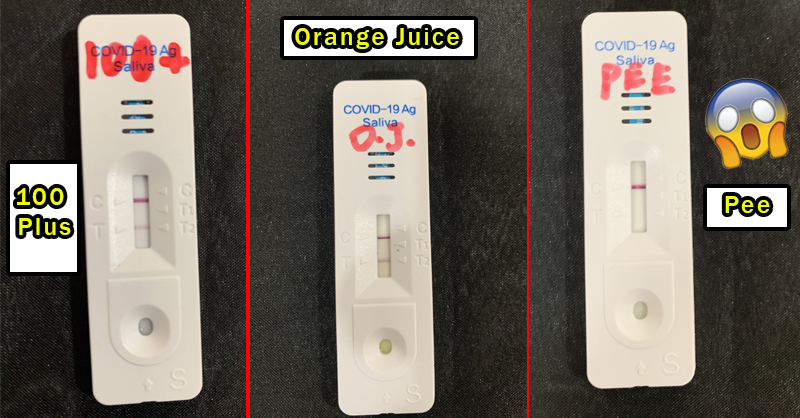We tested 10 kits AGAIN on our C0v1d-positive writer. This time, a lot more failed
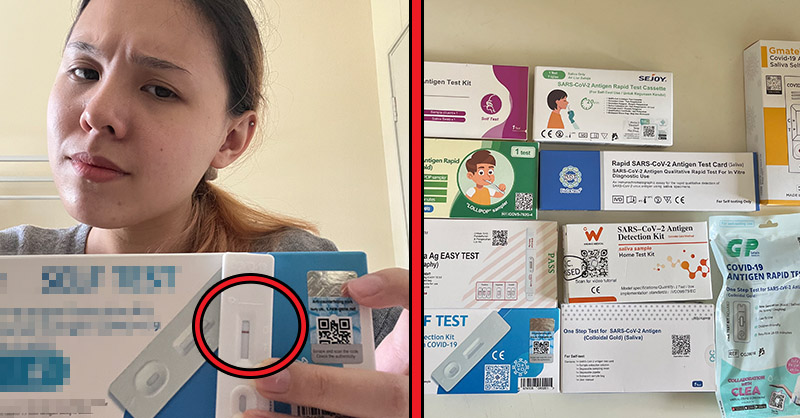
- 631Shares
- Facebook518
- Twitter10
- LinkedIn10
- Email14
- WhatsApp79
Not gonna lie, the CILISOS writers have seen more spit these past few weeks than an extra in a retro German adult movie. When our article testing RTK kits went viral (insert joke here) we were hit with requests to include other brands and also questions if we used the kits that failed correctly.
This all pointed to a sequel. A video sequel.
The plan was simple: Wait for someone on the team to kena the ‘rona. Record them doing the tests and results. Publish video. Profit. And when our writer Ivory informed us she tested positive, we silently cheered inside as we asked if she was okay. Because we knew it was go time.

Except, like most sequels, things didn’t go according to plan. From the 10 brands that she tested, she got a negative result on 8 of them; with only two brands netting the expected positive result. Unfortunately, a decision was made to stop the testing and wait for someone with a more cooperative infection to repeat our experiment – and it was unfortunate because we only noticed later that both the kits that passed were swab tests.
Ivory started the experiment on Day 5 of her infection
First, a disclaimer: This article is meant to highlight a weird anomaly we noticed, and try to make sense of it. Ivory’s results were weird and should not be used to gauge how effective a certain brand is. We’re also not advocating nasal swab RTKs over the other types.
Ivory conducted the tests on Day 5 of her showing symptoms, where the viral load would still be relatively high. In fact, some recent research from Japan suggests that Omnomnomicron viral loads are highest between 3-6 days of the onset of symptoms, although it’s a preliminary study with only 21 participants so don’t go around quoting this as fact like…uh… what we’re doing now.
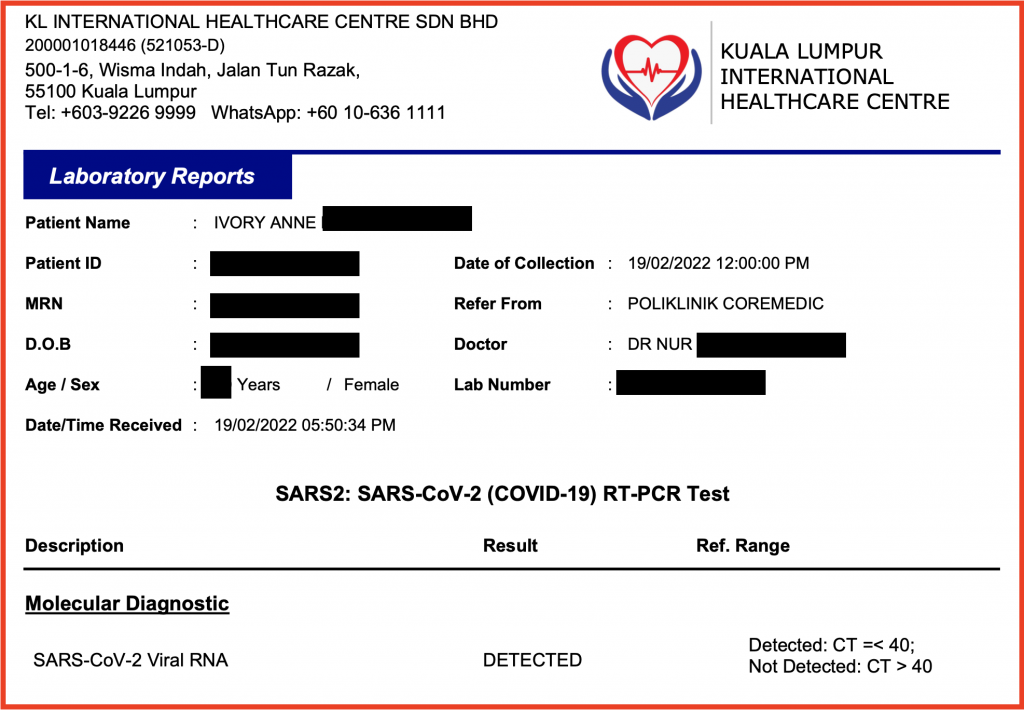
Either way, Ivory had a sore throat and other related symptoms, which peaked just the day before we ran the experiment. Procedure-wise, the only change we made from our original attempt was that, for video recording purposes, Ivory took the tests back-to-back instead of collecting all her puipui in a single container. Otherwise, it was pretty much the same:
- Use each kit according to their printed instructions
- Collect saliva from the back of the throat by coughing (for spit tests)
- Run each test back to back, fully recorded on camera
Btw, some of the information used in this article came from a really interesting presentation by the Malaysian Diagnostics Corporation, the people bringing in the V-Chek RTK. An interesting nugget that they dropped was on the directions to “cough deeply” before spitting…. which is pretty subjective when you think about it:
“You can show a person how to swab and where to swab, but you cannot show a person how to cough” – Tan, application specialist at MDC
We reviewed the videos to ensure she’d done the tests properly, but you can watch the unedited (and unused 
And, as you already know, her results were weirder than the plot structure of a retro German adult movie:
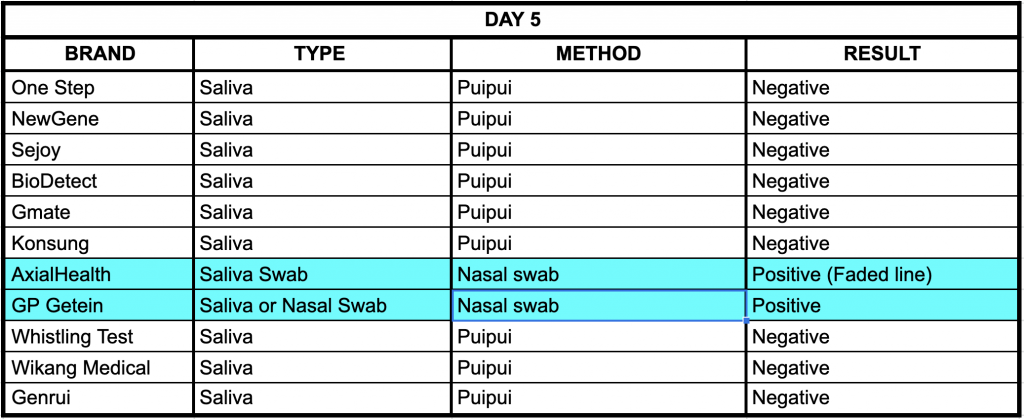
Even if we discount that the viral load would have lessened the more she did the tests (since they were back-to-back), it was still pretty weird that she tested negative on ALL of the puipui saliva tests. What’s even weirder is that, while the two tests that passed were swab-based, they weren’t even the same type of swab: One was a nasal swab and the other was a hybrid swab.
By the time someone with the wisdom of a Form 3 Pendidikan Sains student noticed this pattern, it was too late. More than a day had already passed, and it wouldn’t be fair to continue with more swab tests.
But on Day 7, we heard that Singapore doesn’t use puipui tests
As we were figuring what to do, one of our writers heard from his Singaporean friend that Singapore only uses nasal swab RTKs. After confirming this with some other people and the list of kits authorized by the Health Sciences Authority, we decided to try something completely stupid irresponsible different:
What happens if Ivory puts a nasal swab sample in a puipui test?

Warning: Using a kit against the manufacturer’s instructions is strongly not recommended and may lead to false results. DO NOT use a makeshift nose swab in a spit test.
We sent Ivory 2 boxes from 3 brands of spit-type RTKs, in which:
- (1) would be using spit according to instructions
- (1) would be using a nose swab against instructions – she would swab a sample from her nose with a cotton bud and mix that into the buffer solution
And all tested negative except for one – a nose swab that was done against manufacturer instructions.

Yeap. That same brand didn’t get a positive result when used with actual spit, but tested positive when (incorrectly) used with a swab sample from her nose. We know what your knee-jerk response is going to be, but hold on before you throw away all your puipui tests – Ivory only got that result on one test and, as the saying goes, one swallow doesn’t make a German adult movie.
However, this does lead to the broader topic of….
OMG do nasal swabs work better than puipui RTKs???
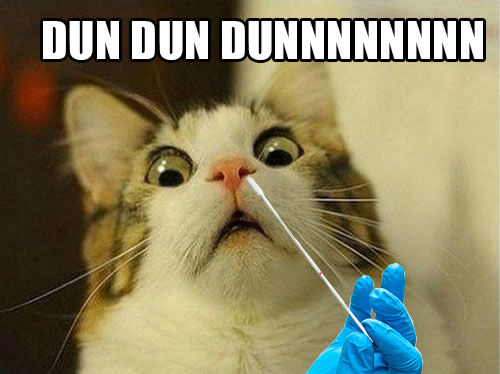
We’re gonna really simplify the science-y stuff since, as you know by now, we shouldn’t be trusted with anything remotely related to science. Let’s start by seeing how the tests actually work.
First up, while we might associate PCR tests with nasopharyngeal swabs (the ones that cucuk deep into your nose), PCRs can actually be done with saliva and nasal swab samples as well. This becomes a somewhat important point later. The reason why PCR tests are considered the “gold standard” is because they work by amplifying even very small amounts of the virus’ RNA until it can be detected.
On the other hand, the majority of RTKs that we use are Antigen (Ag) tests which identifies a protein in the outer membrane of the virus, which essentially means that Ag RTK tests depend on the sample containing a large enough viral load to bind to and catch. This is why many tests ask you to cough deeply to ‘bring out’ the viral load from the back of your throat, and to avoid eating, smoking, or drinking; because that can dilute the viral load and/or destroy the membrane.
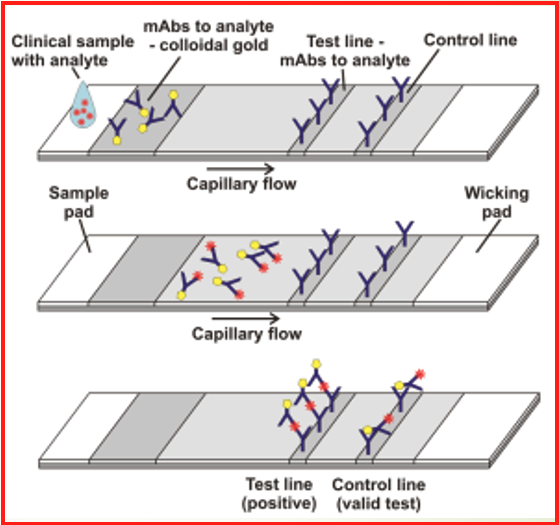
But here’s the thing – many studies have indicated that saliva tends to outperform both nasopharyngeal and self-administered (the ones in RTK kits) nasal swabs for early diagnosis.
For example, a study Wyllie et. al. published in September 2020 indicated that saliva tests had a higher percentage for testing positive for 1 – 10 days from diagnosis, while nasopharyngeal swabs had a higher percentage after 11 days from diagnosis. Closer to home, a Singaporean study by Kuo et. al published in February 2021 that compared nasopharyngeal, self-administered, and saliva samples also found similar results.
But aha – most of the studies we read were performed with lab equipment, which brings the conversation to test sensitivity. Basically, what we call the reliability of the test can be broken down into:
- Sensitivity (the ability to detect an infection); and
- Specificity (the unlikeliness to get a false positive result)
While Ag-RTKs have high specificity, they aren’t as sensitive as PCR tests – which is pretty expected since it’s like bringing a plastic rectangle to a lab fight. This was explored in a study by Savela et. al. published in February 2022, where their data revealed a “more nuanced view than “saliva is better than swab””.
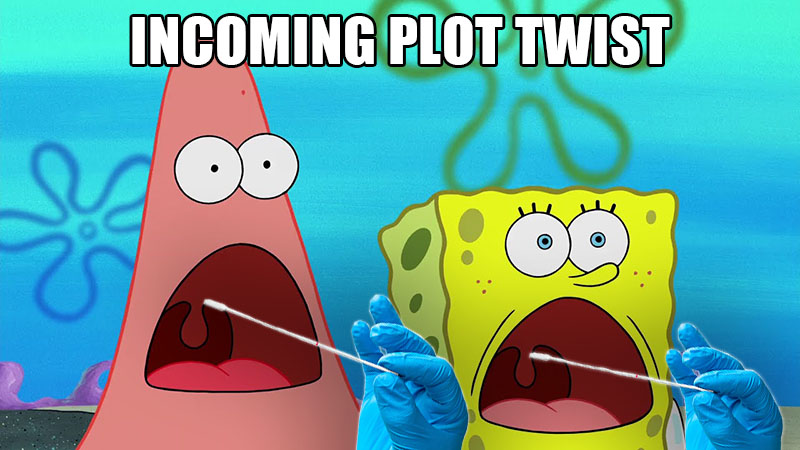
Similar to the Wyllie and Kuo studies, the Savela study found that the virus’s RNA is more detectable in saliva in the early stages of the infection, but viral loads were higher in nasal swabs at the peak of the infection on unvaccinated participants. However, this was only when high sensitivity equipment was used, which is to say that low-sensitivity tests would not have detected the infection early.
Although they specified that their research shows that more studies need to be done on the interaction between sampling sites, sensitivity of test equipment, and stage of infection; their results indicated “the preferred use of nasal swabs in environments where only low-sensitivity testing is available, although the performance of such testing for early detection is poor”.
So putting everything together, our takeaway is that RTKs can’t be used to warn that you’ve been infected, but just to confirm that you’ve been infected. Unless you happen to have PCR testing equipment in your house, it’s just a matter of whether you prefer puipui or swabs.
RTKs aren’t a warning tool, it’s a confirmation tool

At the end of the day, RTKs still a cheaper, faster, and less invasive way to test yourself – Ivory first found out she was positive from a puipui test anyway.
But looking at how people are sharing their negative RTK results to attend events and family gatherings, perhaps we’re putting more confidence into the product than it was originally intended – that a negative result means the person is 100% clear and able to attend a gathering or event tanpa was-was. Much more than the question of which test works better, the bigger issue might be that we forget that someone might have an early infection even if the test doesn’t show it. If you’re not feeling well, it’s still a better idea to stay home even if you’ve tested negative.
But back to Ivory, there are some other possible reasons to explain her weird results (click the links for more info):
- RTKs may be less sensitive to Omnomnomicron.
- Viral loads are lower in recently-vaccinated people – Ivory had a booster shot less than a couple of months before her infection.
But our personal theory is related to the stealth variant of Omnomnomicron which carries a mutation that causes PCR tests to miss it. Going against manufacturer instructions worked because the virus was hiding out in her nose, not expecting that Ivory would use a swab for a spit test.
We…We’re really grasping at straws here.
Anyway, here’s more reading if you want to see how we blew our entire editorial budget on RTK tests:
- We got a C-Positive person to try to RTK tests. Here’s how many failed
- How to fake a positive RTK result every time, using kedai runcit items
- 631Shares
- Facebook518
- Twitter10
- LinkedIn10
- Email14
- WhatsApp79

